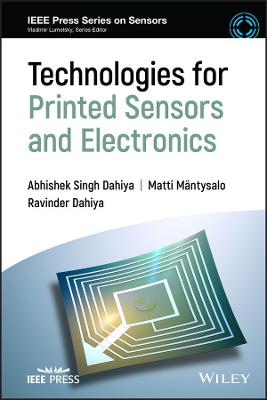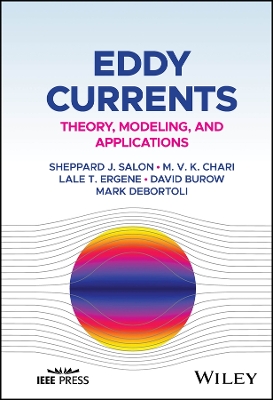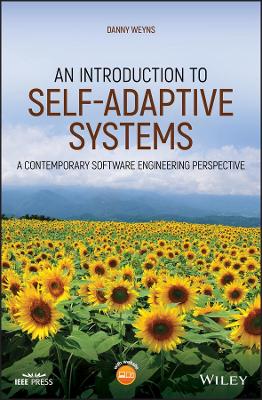Design for Excellence in Electronics Manufacturing
 -15%
portes grátis
-15%
portes grátis
Design for Excellence in Electronics Manufacturing
Tulkoff, Cheryl; Caswell, Greg
John Wiley & Sons Inc
04/2021
400
Dura
Inglês
9781119109372
15 a 20 dias
618
List of Figures xix
List of Tables xxv
Series Foreword xxvii
Foreword xxix
Preface xxxi
Acknowledgments xxxiii
Acronyms xxxv
1 Introduction to Design for Excellence 1
1.1 Design for Excellence (DfX) in Electronics Manufacturing 1
1.2 Chapter 2: Establishing a Reliability Program 2
1.3 Chapter 3: Design for Reliability (DfR) 3
1.4 Chapter 4: Design for the Use Environment: Reliability Testing and Test Plan Development 3
1.5 Chapter 5: Design for Manufacturability (DfM) 4
1.6 Chapter 6: Design for Sustainability 4
1.7 Chapter 7: Root Cause Problem-Solving, Failure Analysis, and Continual Improvement Techniques 5
2 Establishing a Reliability Program 7
2.1 Introduction 7
2.2 Best Practices and the Economics of a Reliability Program 9
2.2.1 Best-in-Class Reliability Program Practices 10
2.3 Elements of a Reliability Program 12
2.3.1 Reliability Goals 13
2.3.2 Defined Use Environments 14
2.3.3 Software Reliability 15
2.3.4 General Software Requirements 18
2.4 Reliability Data 24
2.4.1 Sources of Reliability Data 27
2.4.2 Reliability Data from Suppliers 27
2.5 Analyzing Reliability Data: Commonly Used Probability and Statistics Concepts in Reliability 29
2.5.1 Reliability Probability in Electronics 30
2.5.2 Reliability Statistics in Electronics 31
2.5.2.1 Basic Statistics Assumptions and Caveats 32
2.5.2.2 Variation Statistics 33
2.5.2.3 Statistical Distributions Used in Reliability 33
2.6 Reliability Analysis and Prediction Methods 34
2.7 Summary 40
References 40
3 Design for Reliability 43
3.1 Introduction 43
3.2 DfR and Physics of Failure 45
3.2.1 Failure Modes and Effects Analysis 48
3.2.2 Fault Tree Analysis 48
3.2.3 Sneak Circuit Analysis 48
3.2.4 DfR at the Concept Stage 48
3.3 Specifications (Product and Environment Definitions and Concerns) 52
3.4 Reliability Physics Analysis 55
3.4.1 Reliability Physics Alternatives 62
3.4.2 Reliability Physics Models and Examples 64
3.4.2.1 Arrhenius Equation 64
3.4.2.2 Eyring Equation 65
3.4.2.3 Black's Equation 65
3.4.2.4 Peck's Law 66
3.4.2.5 Norris-Landzberg Equation 66
3.4.2.6 Creep Mechanisms 68
3.4.3 Component Selection 68
3.4.4 Critical Components 70
3.4.5 Moisture-Sensitivity Level 71
3.4.6 Temperature-Sensitivity Level 71
3.4.7 Electrostatic Discharge 72
3.4.8 Lifetime 73
3.5 Surviving the Heat Wave 74
3.6 Redundancy 78
3.7 Plating Materials: Tin Whiskers 79
3.8 Derating and Uprating 82
3.9 Reliability of New Packaging Technologies 84
3.10 Printed Circuit Boards 86
3.10.1 Surface Finishes 86
3.10.1.1 Organic Solderability Preservative (OSP) 88
3.10.1.2 Immersion Silver (ImAg) 88
3.10.1.3 Immersion Tin (ImSn) 90
3.10.1.4 Electroless Nickel Immersion Gold (ENIG) 90
3.10.1.5 Lead-Free Hot Air Solder Leveled (HASL) 91
3.10.2 Laminate Selection 93
3.10.3 Cracking and Delamination 93
3.10.4 Plated Through-Holes and Vias 95
3.10.5 Conductive Anodic Filament 98
3.10.6 Strain and Flexure Issues 101
3.10.7 Pad Cratering 105
3.10.8 PCB Buckling 106
3.10.9 Electrochemical Migration 106
3.10.9.1 Temperature 107
3.10.9.2 Relative Humidity 107
3.10.9.3 Voltage Bias 108
3.10.9.4 Conductor Spacing 108
3.10.9.5 Condensation 113
3.10.10 Cleanliness 117
3.10.10.1 Chloride 118
3.10.10.2 Bromide 118
3.10.10.3 Cations 119
3.10.10.4 Weak Organic Acids 119
3.10.10.5 Cleanliness Testing 119
3.11 Non-Functional Pads 120
3.12 Wearout Mechanisms 121
3.12.1 IC Wearout 121
3.13 Conformal Coating and Potting 124
3.13.1 Silicone 125
3.13.2 Polyurethane 126
3.13.3 Epoxy 126
3.13.4 Acrylic 126
3.13.5 Superhydrophobics 127
References 131
4 Design for the Use Environment: Reliability Testing and Test Plan Development 135
4.1 Introduction 135
4.1.1 Elements of a Testing Program 136
4.1.2 Know the Environment 140
4.2 Standards and Measurements 142
4.3 Failure-Inducing Stressors 143
4.4 Common Test Types 143
4.4.1 Temperature Cycling 143
4.4.2 Temperature-Humidity-Bias Testing 145
4.4.3 Electrical Connection 146
4.4.4 Corrosion Tests 146
4.4.5 Power Cycling 147
4.4.6 Electrical Loads 147
4.4.7 Mechanical Bending 147
4.4.8 Random and Sinusoidal Vibration 148
4.4.9 Mechanical Shock 154
4.4.10 ALT Testing 154
4.4.11 Highly Accelerated Life Testing (HALT) 156
4.4.12 EMC Testing Dos and Don'ts 157
4.5 Test Plan Development 158
4.5.1 The Process 161
4.5.2 Failure Analysis 162
4.5.3 Screening Tests 162
4.5.4 Case Study One 165
4.5.5 Case Study Two 167
4.5.6 Case Study Three 169
References 172
5 Design for Manufacturability 173
5.1 Introduction 173
5.2 Overview of Industry Standard Organizations 177
5.3 Overview of DfM Processes 181
5.3.1 The DfM Process 182
5.4 Component Topics 183
5.4.1 Part Selection 184
5.4.2 Moisture Sensitivity Level (MSL) 184
5.4.3 Temperature Sensitivity Level (TSL) 185
5.4.4 ESD 186
5.4.5 Derating 187
5.4.6 Ceramic Capacitor Cracks 188
5.4.7 Life Expectancies 193
5.4.8 Aluminum Electrolytic Capacitors 194
5.4.9 Resistors 195
5.4.10 Tin Whiskers 196
5.4.11 Integrated Circuits 198
5.5 Printed Circuit Board Topics 199
5.5.1 Laminate Selection 199
5.5.2 Surface Finish 200
5.5.3 Discussion of Different Surface Finishes 200
5.5.4 Stackup 204
5.5.5 Plated Through-Holes 206
5.5.6 Conductive Anodic Filament (CAF) Formation 206
5.5.7 Copper Weight 208
5.5.8 Pad Geometries 208
5.5.9 Trace and Space Separation 210
5.5.10 Non-Functional Pads 211
5.5.11 Shipping and Handling 211
5.5.12 Cleanliness and Contamination 211
5.6 Process Materials 215
5.6.1 Solder 215
5.6.2 Solder Paste 215
5.6.3 Flux 216
5.6.4 Stencils 218
5.6.5 Conformal Coating 219
5.6.6 Potting 223
5.6.7 Underfill 224
5.6.8 Cleaning Materials 225
5.6.9 Adhesives 226
5.7 Summary: Implementing DfM 227
References 227
6 Design for Sustainability 229
6.1 Introduction 229
6.2 Obsolescence Management 230
6.2.1 Obsolescence-Resolution Techniques 230
6.2.1.1 Industry Standards 233
6.2.1.2 Asset Security 235
6.3 Long-Term Storage 236
6.4 Long-Term Reliability Issues 238
6.5 Counterfeit Prevention and Detection Strategies 243
6.6 Supplier Selection 257
6.6.1 Selecting a Printed Circuit Board Fabricator 260
6.6.2 Auditing a Printed Circuit Board Fabricator 266
6.6.2.1 Selecting a Contract Manufacturer 284
6.6.2.2 Auditing a Contract Manufacturer 287
6.6.2.3 Summary 292
References 292
7 Root Cause Problem-Solving, Failure Analysis, and Continual Improvement Techniques 295
7.1 Introduction 295
7.1.1 Continual Improvement 296
7.1.2 Problem-Solving 297
7.1.3 Identifying Problems and Improvement Opportunities 297
7.1.4 Overview of Industry Standard Organizations 299
7.2 Root Cause Failure Analysis Methodology 301
7.2.1 Strategies for Selecting an Approach 301
7.2.2 The 5Whys Approach 302
7.2.3 The Eight Disciplines (8D) 304
7.2.4 Shainin Red X: Diagnostic Journey 308
7.2.5 Six Sigma 310
7.2.6 Physics of Failure 311
7.3 Failure Reporting, Analysis, and Corrective Action System (FRACAS) 312
7.4 Failure Analysis 314
7.4.1 Failure Analysis Techniques 317
7.4.1.1 Visual Inspection 318
7.4.1.2 Electrical Characterization 318
7.4.1.3 Scanning Acoustic Microscopy 319
7.4.1.4 X-Ray Microscopy 321
7.4.1.5 Thermal Imaging 323
7.4.1.6 SQUID Microscopy 324
7.4.1.7 Decapsulation 324
7.4.1.8 Cross-Sectioning 325
7.4.1.9 Scanning Electron Microscope / Energy Dispersive X-ray Spectroscopy (SEM/EDX) 326
7.4.1.10 Surface/Depth Profiling Techniques: Secondary Ion Mass Spectroscopy (SIMS), Auger 329
7.4.1.11 Focused Ion Beam (FIB) 330
7.4.1.12 Mechanical Testing: Wire Pull, Wire Shear, Solder Ball Shear, Die Shear 330
7.4.1.13 Fourier Transform Infra-Red Spectroscopy FTIR 330
7.4.1.14 Ion Chromatography 332
7.4.1.15 Differential Scanning Calorimetry (DSC) 333
7.4.1.16 Thermomechanical Analysis / Dynamic Mechanical Analysis (DMA/TMA) 334
7.4.1.17 Digital Image Correlation (DIC) 334
7.4.1.18 Other Simple Failure Analysis Tools 334
7.4.2 Failure Verification 335
7.4.3 Corrective Action 336
7.4.4 Closing the Failure Report 337
7.5 Continuing Education and Improvement Activities 338
7.6 Summary: Implementing Root Cause Methodology 338
References 339
8 Conclusion to Design for Excellence: Bringing It All Together 341
8.1 Design for Excellence (DfX) in Electronics Manufacturing 341
8.2 Chapter 2: Establishing a Reliability Program 341
8.3 Chapter 3: Design for Reliability (DfR) 343
8.4 Chapter 4: Design for the Use Environment: Reliability Testing and Test Plan Development 344
8.5 Chapter 5: Design for Manufacturability 346
8.6 Chapter 6: Design for Sustainability 348
8.7 Chapter 7: Root Cause Problem Solving, Failure Analysis, and Continual Improvement Techniques 349
Index 351
List of Figures xix
List of Tables xxv
Series Foreword xxvii
Foreword xxix
Preface xxxi
Acknowledgments xxxiii
Acronyms xxxv
1 Introduction to Design for Excellence 1
1.1 Design for Excellence (DfX) in Electronics Manufacturing 1
1.2 Chapter 2: Establishing a Reliability Program 2
1.3 Chapter 3: Design for Reliability (DfR) 3
1.4 Chapter 4: Design for the Use Environment: Reliability Testing and Test Plan Development 3
1.5 Chapter 5: Design for Manufacturability (DfM) 4
1.6 Chapter 6: Design for Sustainability 4
1.7 Chapter 7: Root Cause Problem-Solving, Failure Analysis, and Continual Improvement Techniques 5
2 Establishing a Reliability Program 7
2.1 Introduction 7
2.2 Best Practices and the Economics of a Reliability Program 9
2.2.1 Best-in-Class Reliability Program Practices 10
2.3 Elements of a Reliability Program 12
2.3.1 Reliability Goals 13
2.3.2 Defined Use Environments 14
2.3.3 Software Reliability 15
2.3.4 General Software Requirements 18
2.4 Reliability Data 24
2.4.1 Sources of Reliability Data 27
2.4.2 Reliability Data from Suppliers 27
2.5 Analyzing Reliability Data: Commonly Used Probability and Statistics Concepts in Reliability 29
2.5.1 Reliability Probability in Electronics 30
2.5.2 Reliability Statistics in Electronics 31
2.5.2.1 Basic Statistics Assumptions and Caveats 32
2.5.2.2 Variation Statistics 33
2.5.2.3 Statistical Distributions Used in Reliability 33
2.6 Reliability Analysis and Prediction Methods 34
2.7 Summary 40
References 40
3 Design for Reliability 43
3.1 Introduction 43
3.2 DfR and Physics of Failure 45
3.2.1 Failure Modes and Effects Analysis 48
3.2.2 Fault Tree Analysis 48
3.2.3 Sneak Circuit Analysis 48
3.2.4 DfR at the Concept Stage 48
3.3 Specifications (Product and Environment Definitions and Concerns) 52
3.4 Reliability Physics Analysis 55
3.4.1 Reliability Physics Alternatives 62
3.4.2 Reliability Physics Models and Examples 64
3.4.2.1 Arrhenius Equation 64
3.4.2.2 Eyring Equation 65
3.4.2.3 Black's Equation 65
3.4.2.4 Peck's Law 66
3.4.2.5 Norris-Landzberg Equation 66
3.4.2.6 Creep Mechanisms 68
3.4.3 Component Selection 68
3.4.4 Critical Components 70
3.4.5 Moisture-Sensitivity Level 71
3.4.6 Temperature-Sensitivity Level 71
3.4.7 Electrostatic Discharge 72
3.4.8 Lifetime 73
3.5 Surviving the Heat Wave 74
3.6 Redundancy 78
3.7 Plating Materials: Tin Whiskers 79
3.8 Derating and Uprating 82
3.9 Reliability of New Packaging Technologies 84
3.10 Printed Circuit Boards 86
3.10.1 Surface Finishes 86
3.10.1.1 Organic Solderability Preservative (OSP) 88
3.10.1.2 Immersion Silver (ImAg) 88
3.10.1.3 Immersion Tin (ImSn) 90
3.10.1.4 Electroless Nickel Immersion Gold (ENIG) 90
3.10.1.5 Lead-Free Hot Air Solder Leveled (HASL) 91
3.10.2 Laminate Selection 93
3.10.3 Cracking and Delamination 93
3.10.4 Plated Through-Holes and Vias 95
3.10.5 Conductive Anodic Filament 98
3.10.6 Strain and Flexure Issues 101
3.10.7 Pad Cratering 105
3.10.8 PCB Buckling 106
3.10.9 Electrochemical Migration 106
3.10.9.1 Temperature 107
3.10.9.2 Relative Humidity 107
3.10.9.3 Voltage Bias 108
3.10.9.4 Conductor Spacing 108
3.10.9.5 Condensation 113
3.10.10 Cleanliness 117
3.10.10.1 Chloride 118
3.10.10.2 Bromide 118
3.10.10.3 Cations 119
3.10.10.4 Weak Organic Acids 119
3.10.10.5 Cleanliness Testing 119
3.11 Non-Functional Pads 120
3.12 Wearout Mechanisms 121
3.12.1 IC Wearout 121
3.13 Conformal Coating and Potting 124
3.13.1 Silicone 125
3.13.2 Polyurethane 126
3.13.3 Epoxy 126
3.13.4 Acrylic 126
3.13.5 Superhydrophobics 127
References 131
4 Design for the Use Environment: Reliability Testing and Test Plan Development 135
4.1 Introduction 135
4.1.1 Elements of a Testing Program 136
4.1.2 Know the Environment 140
4.2 Standards and Measurements 142
4.3 Failure-Inducing Stressors 143
4.4 Common Test Types 143
4.4.1 Temperature Cycling 143
4.4.2 Temperature-Humidity-Bias Testing 145
4.4.3 Electrical Connection 146
4.4.4 Corrosion Tests 146
4.4.5 Power Cycling 147
4.4.6 Electrical Loads 147
4.4.7 Mechanical Bending 147
4.4.8 Random and Sinusoidal Vibration 148
4.4.9 Mechanical Shock 154
4.4.10 ALT Testing 154
4.4.11 Highly Accelerated Life Testing (HALT) 156
4.4.12 EMC Testing Dos and Don'ts 157
4.5 Test Plan Development 158
4.5.1 The Process 161
4.5.2 Failure Analysis 162
4.5.3 Screening Tests 162
4.5.4 Case Study One 165
4.5.5 Case Study Two 167
4.5.6 Case Study Three 169
References 172
5 Design for Manufacturability 173
5.1 Introduction 173
5.2 Overview of Industry Standard Organizations 177
5.3 Overview of DfM Processes 181
5.3.1 The DfM Process 182
5.4 Component Topics 183
5.4.1 Part Selection 184
5.4.2 Moisture Sensitivity Level (MSL) 184
5.4.3 Temperature Sensitivity Level (TSL) 185
5.4.4 ESD 186
5.4.5 Derating 187
5.4.6 Ceramic Capacitor Cracks 188
5.4.7 Life Expectancies 193
5.4.8 Aluminum Electrolytic Capacitors 194
5.4.9 Resistors 195
5.4.10 Tin Whiskers 196
5.4.11 Integrated Circuits 198
5.5 Printed Circuit Board Topics 199
5.5.1 Laminate Selection 199
5.5.2 Surface Finish 200
5.5.3 Discussion of Different Surface Finishes 200
5.5.4 Stackup 204
5.5.5 Plated Through-Holes 206
5.5.6 Conductive Anodic Filament (CAF) Formation 206
5.5.7 Copper Weight 208
5.5.8 Pad Geometries 208
5.5.9 Trace and Space Separation 210
5.5.10 Non-Functional Pads 211
5.5.11 Shipping and Handling 211
5.5.12 Cleanliness and Contamination 211
5.6 Process Materials 215
5.6.1 Solder 215
5.6.2 Solder Paste 215
5.6.3 Flux 216
5.6.4 Stencils 218
5.6.5 Conformal Coating 219
5.6.6 Potting 223
5.6.7 Underfill 224
5.6.8 Cleaning Materials 225
5.6.9 Adhesives 226
5.7 Summary: Implementing DfM 227
References 227
6 Design for Sustainability 229
6.1 Introduction 229
6.2 Obsolescence Management 230
6.2.1 Obsolescence-Resolution Techniques 230
6.2.1.1 Industry Standards 233
6.2.1.2 Asset Security 235
6.3 Long-Term Storage 236
6.4 Long-Term Reliability Issues 238
6.5 Counterfeit Prevention and Detection Strategies 243
6.6 Supplier Selection 257
6.6.1 Selecting a Printed Circuit Board Fabricator 260
6.6.2 Auditing a Printed Circuit Board Fabricator 266
6.6.2.1 Selecting a Contract Manufacturer 284
6.6.2.2 Auditing a Contract Manufacturer 287
6.6.2.3 Summary 292
References 292
7 Root Cause Problem-Solving, Failure Analysis, and Continual Improvement Techniques 295
7.1 Introduction 295
7.1.1 Continual Improvement 296
7.1.2 Problem-Solving 297
7.1.3 Identifying Problems and Improvement Opportunities 297
7.1.4 Overview of Industry Standard Organizations 299
7.2 Root Cause Failure Analysis Methodology 301
7.2.1 Strategies for Selecting an Approach 301
7.2.2 The 5Whys Approach 302
7.2.3 The Eight Disciplines (8D) 304
7.2.4 Shainin Red X: Diagnostic Journey 308
7.2.5 Six Sigma 310
7.2.6 Physics of Failure 311
7.3 Failure Reporting, Analysis, and Corrective Action System (FRACAS) 312
7.4 Failure Analysis 314
7.4.1 Failure Analysis Techniques 317
7.4.1.1 Visual Inspection 318
7.4.1.2 Electrical Characterization 318
7.4.1.3 Scanning Acoustic Microscopy 319
7.4.1.4 X-Ray Microscopy 321
7.4.1.5 Thermal Imaging 323
7.4.1.6 SQUID Microscopy 324
7.4.1.7 Decapsulation 324
7.4.1.8 Cross-Sectioning 325
7.4.1.9 Scanning Electron Microscope / Energy Dispersive X-ray Spectroscopy (SEM/EDX) 326
7.4.1.10 Surface/Depth Profiling Techniques: Secondary Ion Mass Spectroscopy (SIMS), Auger 329
7.4.1.11 Focused Ion Beam (FIB) 330
7.4.1.12 Mechanical Testing: Wire Pull, Wire Shear, Solder Ball Shear, Die Shear 330
7.4.1.13 Fourier Transform Infra-Red Spectroscopy FTIR 330
7.4.1.14 Ion Chromatography 332
7.4.1.15 Differential Scanning Calorimetry (DSC) 333
7.4.1.16 Thermomechanical Analysis / Dynamic Mechanical Analysis (DMA/TMA) 334
7.4.1.17 Digital Image Correlation (DIC) 334
7.4.1.18 Other Simple Failure Analysis Tools 334
7.4.2 Failure Verification 335
7.4.3 Corrective Action 336
7.4.4 Closing the Failure Report 337
7.5 Continuing Education and Improvement Activities 338
7.6 Summary: Implementing Root Cause Methodology 338
References 339
8 Conclusion to Design for Excellence: Bringing It All Together 341
8.1 Design for Excellence (DfX) in Electronics Manufacturing 341
8.2 Chapter 2: Establishing a Reliability Program 341
8.3 Chapter 3: Design for Reliability (DfR) 343
8.4 Chapter 4: Design for the Use Environment: Reliability Testing and Test Plan Development 344
8.5 Chapter 5: Design for Manufacturability 346
8.6 Chapter 6: Design for Sustainability 348
8.7 Chapter 7: Root Cause Problem Solving, Failure Analysis, and Continual Improvement Techniques 349
Index 351
















